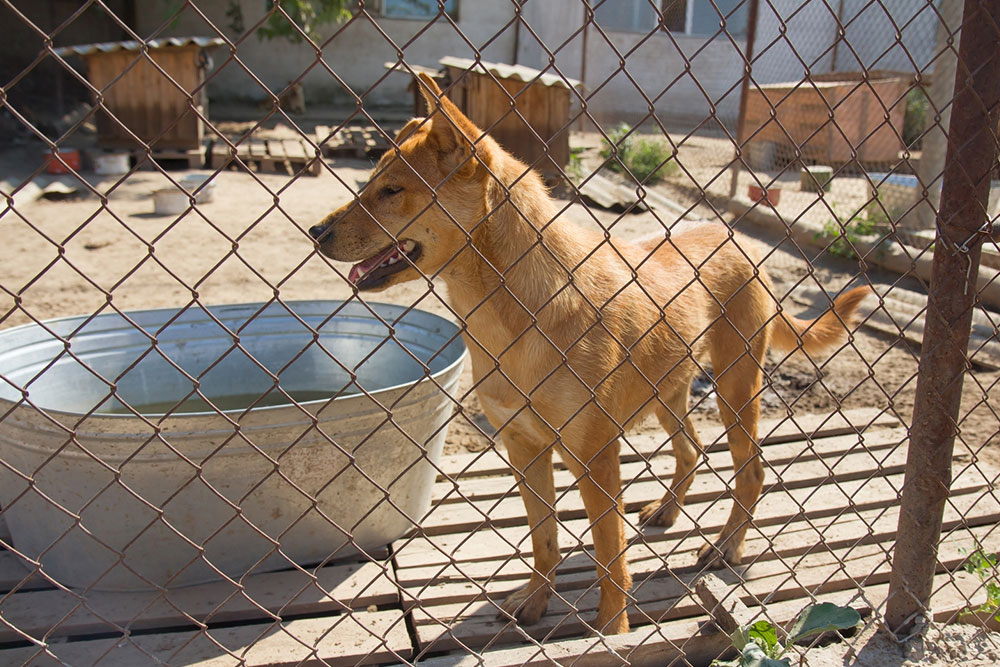7 reasons why invisible pet fences don’t work

Some pet owners use invisible fences, also known as wireless fences, to stop their dogs from leaving the property. These fences are designed to keep pets within a specific boundary, such as the house’s front yard, without installing any physical barrier. Instead, they use a wireless signal or radio frequency to create a virtual perimeter. However, invisible fences for pets are sometimes ineffective. Here are seven reasons why they may not work.
The fence may injure the pet
After fixing an invisible fence, the pet must wear a collar fitted with a receiver. Whenever the pet gets close to the boundary or tries to cross it, the receiver gets a signal from a transmitter placed within the house. After that, a mild electric shock or vibration passes through the collar, which can hurt the pet. Moreover, the metal prongs in the collar rub against the pet’s neck, causing its fur to wear away and leading to infections and open wounds. In worse cases, the collar may malfunction, delivering shocks no matter where the pet stands. Such unnecessary shocks can cause electric burns on the region where the collar’s prongs touch the skin.
The pet may become fearful or aggressive
Invisible wireless fences require pets to undergo aversive training. Although the training methods use positive punishment, it can still backfire. For example, instead of learning not to go near the fence’s boundary, the pet may become too fearful of being subjected to shocks or vibrations. As a result, they may not enjoy playing outside and thus avoid the yard and stay inside or close to the house. Some pets may even develop problems entering or exiting the house’s perimeter. In worse cases, the pet may develop aggressive behavior because of the shocks.
The equipment can fail
After continuous use, the batteries in the collar will die. Because of this, there is always a chance that the fence will stop working. If that happens, one’s furry companions can easily walk or run through the boundary and wander off. This problem usually occurs in the case of dogs that figure out how the collar works. They patrol near the boundary for a long time, constantly setting off the receiver in the collar until its batteries wear out. In such a situation, there are incredibly high risks of the equipment failing to keep the pets within the yard.
The pet’s prey drive may be stronger than the shock
For some pets, the thrill of chasing a moving object is stronger than the fear of the collar being triggered. So, whenever they see a bike or a bird, high-drive pets push through the pain the invisible fence inflicts and rush after them, escaping the boundary.
The pet may develop inappropriate behaviors
When pets are left in the yard for long hours, they can develop unwanted behaviors, like territory reactivity. While most traditional fences block off what’s happening on the other side of the perimeter, invisible fences offer an unobstructed view. In other words, a pet patrolling the yard can see outside the yard. So, they may think everything and everyone beyond it is a threat and try to lunge or jump. The pet may develop reactivity responses over time. These responses can be problematic whenever they are taken out of the house to the vet or for a walk.
The pet is not protected from threats coming from outside
Invisible fences, when they work, are only effective in keeping pets in. While the pet may be unable to go out, the fence does not stop intruders from entering. This leaves them vulnerable to threats that may invade their space. Other animals, wildlife, and even strangers may approach the pet in the yard and harm them.
The collar’s warning tone can cause worry
Some pets are sensitive from a young age. After experiencing the warning tone and shocks during the invisible fence’s training phase, they may associate any beeping sound with shock and pain. So, they might get afraid or worried whenever they hear sounds similar to a beeping noise. These may include the tone of the microwave, beeps on the phone, or low-battery warning alerts on one’s fire alarm. All of these may trigger stressful responses in the pet.



